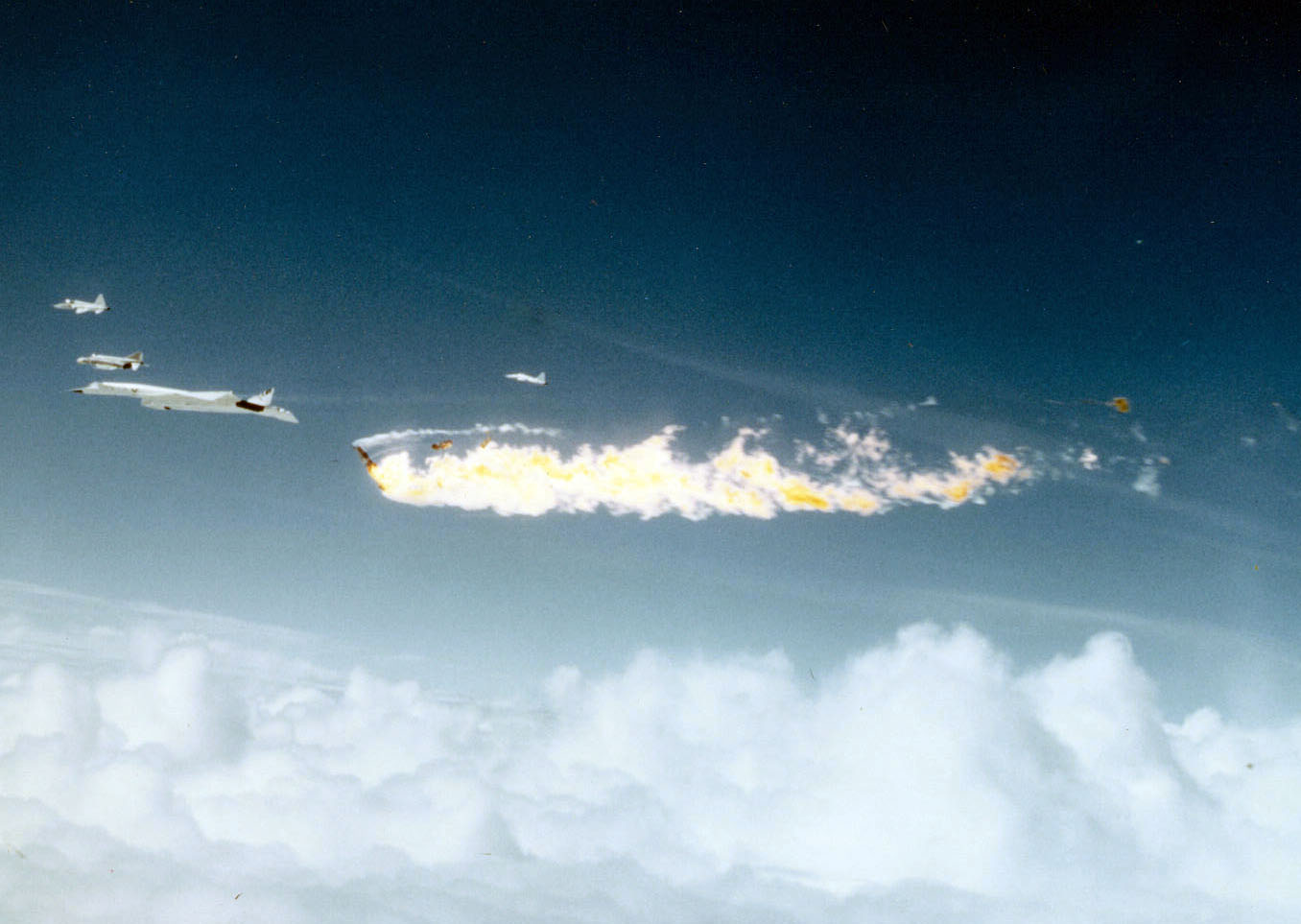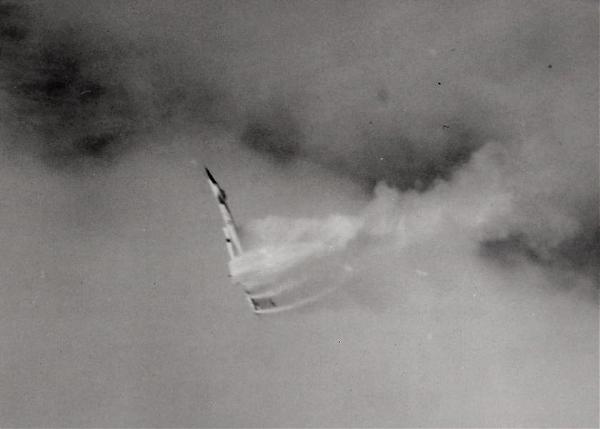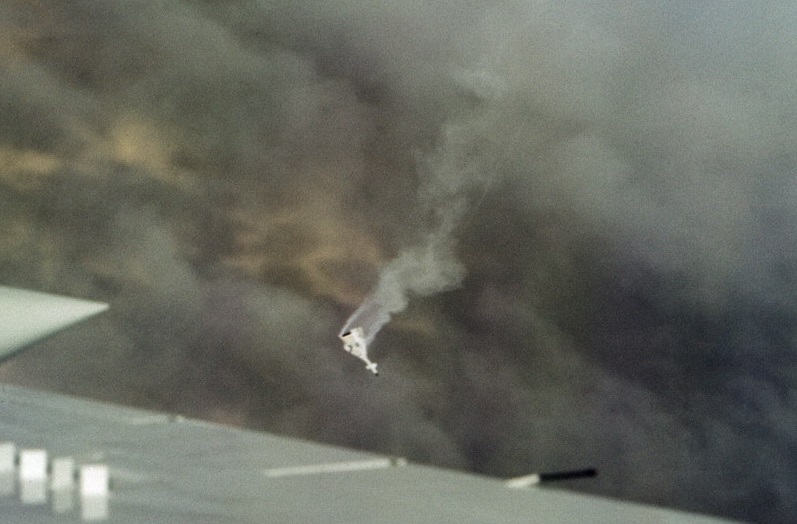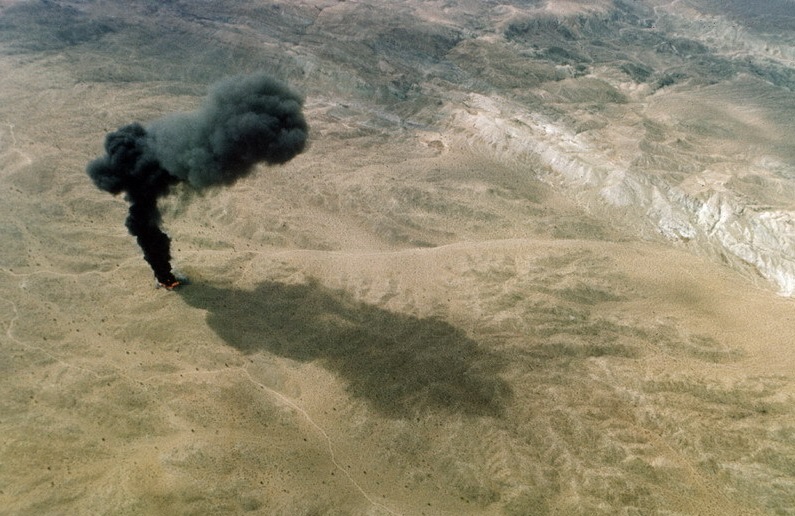
8 June 1966: During a publicity photo formation flight, a Lockheed F-104N Starfighter, N813NA, flown by NASA Chief Research Test Pilot Joseph A. Walker, was caught in the wingtip vortices of the North American Aviation XB-70A-2 Valkyrie, 62-0207, the second prototype Mach 3+ strategic bomber. The Starfighter rolled up and across the Valkyrie. The two airplanes collided, with the F-104 taking off the Valkyrie’s vertical fins, then exploding.

The Valkyrie continued to fly straight and level for 16 seconds before it began to roll inverted. The B-70’s pilot, Alvin S. White, was able to eject, though he was severely injured. Joe Walker and B-70 co-pilot Major Carl S. Cross, United States Air Force, were killed.

Still photographs and motion picture film of the formation were being taken from Clay Lacy’s Gates Lear Jet. The photos were for a General Electric publicity campaign showing U.S. military aircraft that were powered by GE engines. Air Force procedures for requesting and approval of publicity flights were not properly followed and it is likely this flight would not have been approved had they been.

Reportedly, just prior to the collision, Walker radioed, “I’m opposing this mission. It is too turbulent and it has no scientific value.”

© 2016, Bryan R. Swopes
Hi Bryan,
I work in the marketing department for Clay Lacy and I came across your post above. Thanks so much for mentioning Clay Lacy.
We really appreciate it, and were wondering if you could include a link to our website http://www.claylacy.com, so your readers can learn about Clay’s work more easily.
Thanks very much!
I look forward to hearing from you.
Rachel Levinson
Marketing Department
Clay Lacy Aviation
7435 Valjean Avenue
Van Nuys, CA 91406
800.423.2904
[email protected]
ClayLacy.com
Ms. Levinson, I would be happy to include the link. I began my civilian aviation career at VNY (way back in the last century) adjacent to Mr. Lacy’s hangar at the northwest corner of the airport. My employer’s helicopters were parked on the ramp next to the #64 P-51 racer and Miss America. . . Mr. Lacy is a legend in Southern California aviation.
I always remember that crazy French Canadian riding on top of Clay’s DC 8 at airshows!
What a tragic and unnecessary loss of life. All to keep GE’s bigwigs happy for the sake of the almighty dollar. I hope GE got the publicity they were looking for.
In 1966 the knowledge base of wingtip vortices and wake turbulence was still in its infancy. Assuredly NASA Chief Research Test Pilot Joseph A. Walker would have kept greater separation from the XB-70’s right wing tip given today’s exhaustive research.
Unless I’m mistaken–and Ms. Levinson could answer this for certain–Lacy’s LearJet was down for some reason and he had to borrow one for the photo mission. The one he borrowed belonged to Frank Sinatra.
A photograph at check-six.com is apparently the camera crew boarding a Lear Jet on the morning of 8 June 1966. The aircraft is registered N175FS. That N-number is currently assigned to a 1965 Learjet Inc. Model 24A, s/n 031. The current FAA-registered owner is Artemis Aviation Group LLC, Wilmington, Delaware. That address is a Delaware corporation service, the Delaware Registry, Ltd. There are no prior owners listed. . . That said, a website for Sun Lakes Aero Club does indicate that Sinatra owned the airplane until June 1967 when he traded it for a Gulfstream GII. The article describes a succession of owners, and further states that this was the photo plane.
https://www.talesfromthedesert.com/?portfolio=xb-70-valkyrie-crash-site
Good view of the memorial here.
https://tacairnet.com/2014/10/27/crash-of-the-valkyrie/
This site has that Lear Jet photo.
Al White’s daughter was in my 6th grade class at Practice St. Elementary School. I will always remember when the Principle came to our classroom to pull her out of class. We didn’t she her again .. ..
.. .. we “graduated” a week later ?
Thank you, Marty.
I’ve been lifelong friends with Joe Walker’s widow Grace, a wonderful lady. I also went to school with Joe Walker’s son.
I’ve heard the wing tip vortex theory before, but it never sounded right to me. Other sources (via Wikipedia) say that Walker actually drifted into the XB-70’s wing first (due to inability to maintain separation with visual cues, because of his position), and that the vortex possibly contributed to the subsequent impact with the vertical stabilizers.
That is very likely, John.
Tragic story both for the human side and for the loss of the Valkyrie and the demise of the program. Wing tip vortices’ as you said, were not well understood at that time
In 1966, we were still calling it “prop wash” because of the swirling that followed the Connies and DC-6/7s. I don’t think anyone had examined wake vorticies at that time or realized the swirling winds were coming from the wingtips.
I can’t imagine anything in flying that’s more fear filled than the loss of control due to unseen vortices and turbulence, especially when you’re in close proximity to another object that you’re zooming towards…..
NASA folks walked the crash sites in a horizontal line for a couple of days, looking for pieces. Years after Dad would take us for desert jaunts “looking for arrowheads, but he was still looking for wreckage from the crashes of various co-workers in the pilot’s office at Edwards. Later when he did wake vortex studies, I always wondered if that contributed to the crash.
I participated in the daily operation briefing that day at Edwards representing the F111 Joint Test Force. Colonel Bud Anderson chaired the meeting as head of Flight Test at Edwards. He was clearly blind sided by the GE photo shoot plan. Everything had been put in motion before the briefing. He clearly directed that the test profile must not be altered to accommodate the photo shoot.
I was also flying under this armada when the accident occurred, giving an instrument check in a T33. I did not witness the collision, only observed the smoke after the fact.
Bud Anderson, a triple ace, died last month at 102
Tragic.
The T-38 visible in the photo, TF-1601 (59-1601) is currently on display at Maxwell AFB. For a number of years, it was painted as Thunderbird #8 but has been painted as a regular AETC training aircraft for over 2 decades now.
Excellent eye, John. 🙂